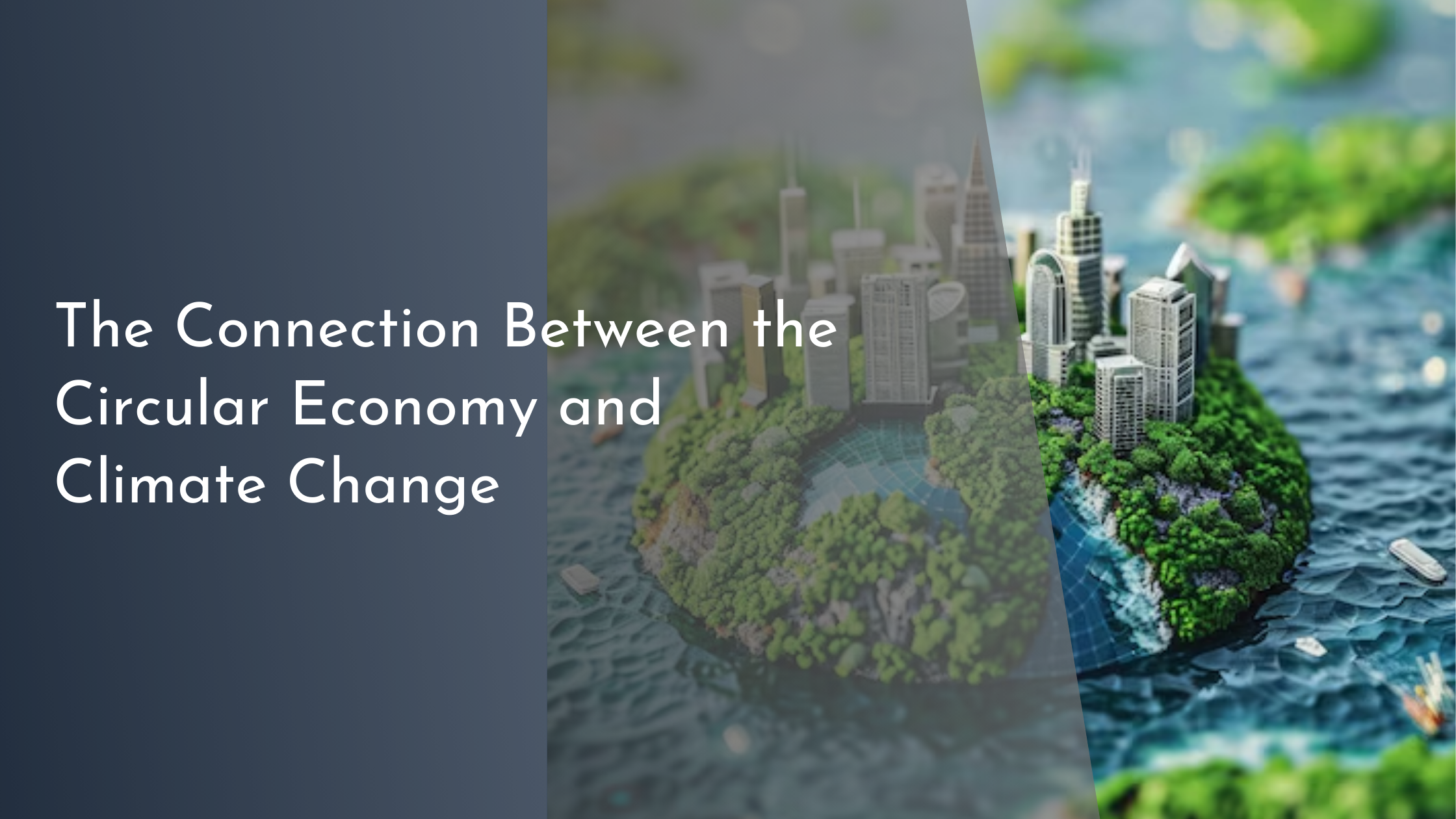The Connection Between the Circular Economy and Climate Change
In the face of escalating climate change threats, innovative solutions are essential to secure a sustainable future. The circular economy emerges as a promising approach, redefining our relationship with resources and offering pathways to lower carbon emissions. Unlike the traditional linear economic model of take-make-dispose, the circular economy emphasizes restorative and regenerative practices. This article delves into the heart of the circular economy, exploring how its implementation can significantly impact carbon emissions and climate change, alongside the innovations driving this transformative shift. Join us as we journey through the possibilities that embracing circularity holds for a greener future.
Understanding the Circular Economy Concept
At its core, the circular economy is an economic system aimed at eliminating waste and the continual use of resources. It contrasts sharply with the linear economy, which follows a ‘take, make, dispose’ model. Instead, the circular economy focuses on reusing, repairing, refurbishing, and recycling existing materials and products. This model not only conserves resources but also aims to create a closed-loop system where waste becomes a resource for new manufacturing processes. By prioritizing longevity, renewability, and efficiency, the circular economy offers a blueprint for sustainable growth that aligns with natural systems.
The principles of the circular economy extend beyond waste management to encompass product design and manufacturing processes. By integrating eco-friendly strategies from the start, products are designed to last longer, be easily repaired, and ultimately recycled back into the economy. Businesses and consumers alike play crucial roles in this system, with consumers making more informed choices and businesses innovating to meet sustainability demands. This collaborative effort transforms economic activities from a linear trajectory to a circular orbit, reducing dependency on finite resources and minimizing environmental impacts.
How Circular Practices Reduce Carbon Emissions
One of the most significant contributions of the circular economy is its potential to reduce carbon emissions, a key driver of climate change. By minimizing waste and maximizing resource efficiency, circular practices lead to a substantial decrease in energy consumption and the need for raw material extraction. For instance, recycling aluminum saves around 95% of the energy required to produce new aluminum from raw ore. Similarly, using recycled plastics in manufacturing can reduce greenhouse gas emissions by up to 30% compared to using virgin materials. These reductions are crucial in the fight against climate change, as they contribute directly to lowering the carbon footprint of production and consumption processes.
In addition to energy savings, circular practices also promote the adoption of renewable energy sources and carbon-neutral technologies. Companies adopting circular models often invest in sustainable energy solutions to power their operations, further reducing their carbon emissions. Moreover, circular strategies encourage innovations like product-as-a-service models, where businesses retain ownership of products and manage their lifecycle, ensuring efficiency and reduced environmental impact throughout. Such strategies not only align with climate goals but also offer economic advantages by reducing costs and increasing competitiveness in an increasingly eco-conscious market.
Innovations Driving Sustainable Resource Use
Innovation plays a pivotal role in advancing the circular economy, with technology and creative solutions leading the way. One such innovation is the rise of digital platforms that facilitate sharing, leasing, and renting instead of owning. These platforms reduce the need for producing new goods by maximizing the use of existing ones, thus cutting down on resource depletion and emissions associated with manufacturing. Additionally, advancements in materials science have led to the development of biodegradable and recyclable materials that replace traditional, resource-intensive options. These materials are designed to break down naturally or be easily reintegrated into the production cycle, enhancing sustainability.
Another groundbreaking innovation is the use of artificial intelligence and big data in creating more efficient supply chains and production processes. By analyzing data, companies can optimize resource use, reduce waste, and anticipate demand more accurately, creating a more efficient and sustainable economic model. Furthermore, innovations in circular agriculture, such as regenerative farming practices, enhance soil health and sequester carbon, contributing to both resource sustainability and climate change mitigation. These technological and methodological advancements are essential in scaling the circular economy and ensuring that it can meet the demands of a growing population within planetary boundaries.
Embracing Circularity for a Greener Future
To fully harness the potential of the circular economy in combating climate change, a collective shift towards circularity is essential. Governments can play a significant role by implementing policies and regulations that support circular practices, such as incentives for recycling and penalties for waste. Public awareness campaigns can also educate consumers on the benefits of circular practices, encouraging behavioral changes that favor sustainable consumption. By fostering an environment that supports circular models, societal transformation toward sustainability becomes achievable.
Businesses, too, have the opportunity to lead by example, adopting circular practices not just for compliance but as a competitive advantage. By redesigning their products and processes for circularity, companies can reduce costs, open new revenue streams, and enhance customer loyalty. Moreover, collaborations across industries can lead to shared innovations and knowledge, accelerating the transition to a circular economy. Ultimately, the widespread adoption of circular practices holds the promise of a greener, more resilient future, in which economic growth and environmental protection are not mutually exclusive but mutually reinforcing.
The connection between the circular economy and climate change underscores a hopeful narrative in the quest for sustainability. By reimagining our economic systems and embracing circular practices, we can significantly reduce carbon emissions and mitigate the impacts of climate change. The innovations driving this shift are not only practical but also inspirational, showcasing the power of human ingenuity in the face of environmental challenges. As we continue to embrace circularity, we pave the way for a future where economic prosperity and ecological balance coexist harmoniously, ensuring a healthier planet for generations to come.


